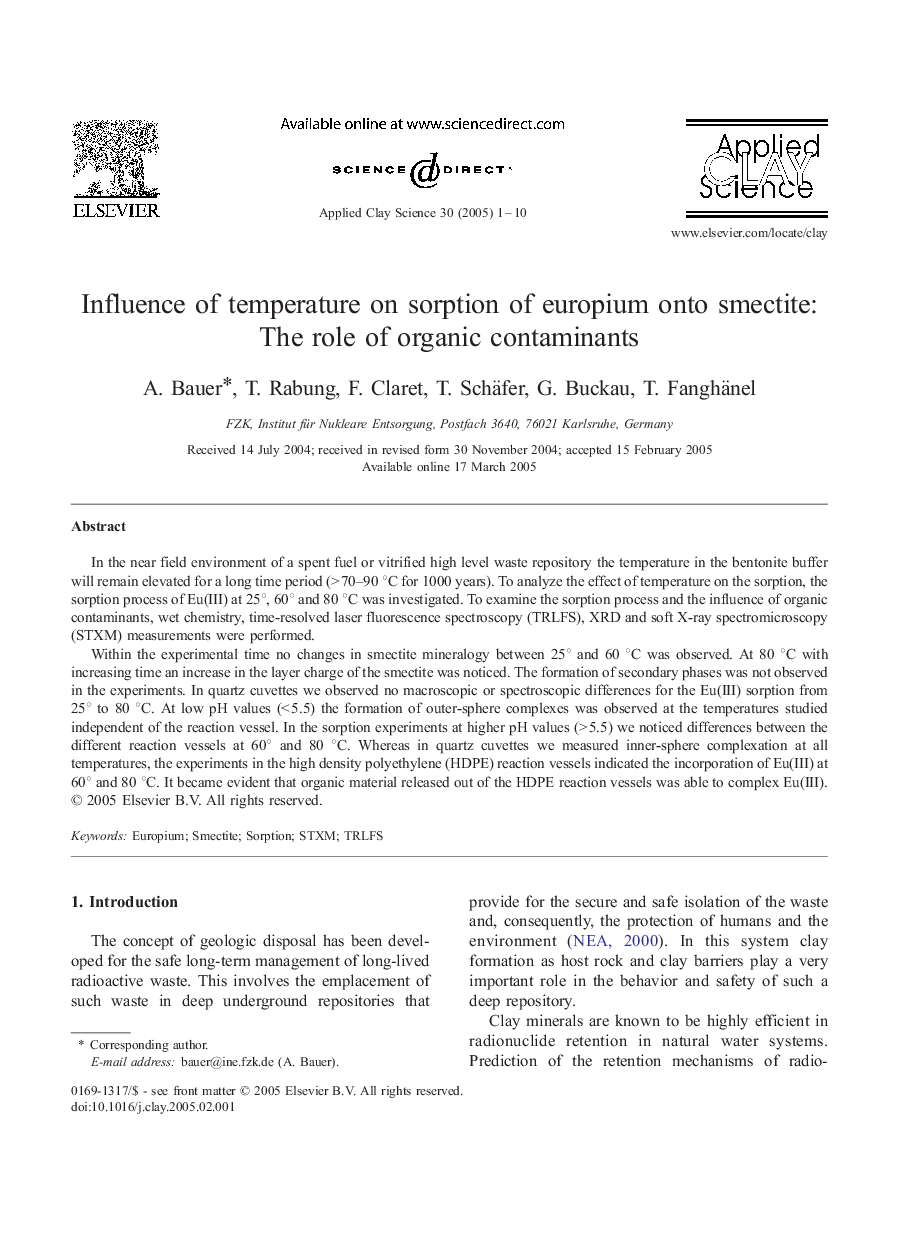| Article ID | Journal | Published Year | Pages | File Type |
|---|---|---|---|---|
| 10676976 | Applied Clay Science | 2005 | 10 Pages |
Abstract
Within the experimental time no changes in smectite mineralogy between 25° and 60 °C was observed. At 80 °C with increasing time an increase in the layer charge of the smectite was noticed. The formation of secondary phases was not observed in the experiments. In quartz cuvettes we observed no macroscopic or spectroscopic differences for the Eu(III) sorption from 25° to 80 °C. At low pH values (< 5.5) the formation of outer-sphere complexes was observed at the temperatures studied independent of the reaction vessel. In the sorption experiments at higher pH values (> 5.5) we noticed differences between the different reaction vessels at 60° and 80 °C. Whereas in quartz cuvettes we measured inner-sphere complexation at all temperatures, the experiments in the high density polyethylene (HDPE) reaction vessels indicated the incorporation of Eu(III) at 60° and 80 °C. It became evident that organic material released out of the HDPE reaction vessels was able to complex Eu(III).
Related Topics
Physical Sciences and Engineering
Earth and Planetary Sciences
Geochemistry and Petrology
Authors
A. Bauer, T. Rabung, F. Claret, T. Schäfer, G. Buckau, T. Fanghänel,
